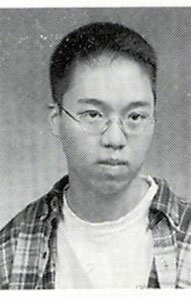NEWS- Brutal history: Motives range from hate to madness
As President George W. Bush said at his Monday afternoon press conference, "Schools should be sanctuaries of safety and learning."
By then, it was clear that what happened at Virginia Tech wasn't just America's worst school shooting. Having topped the death toll of 21 at the San Ysidro McDonald's in 1984 and the 23 slain at Luby's Cafeteria in Killeen, Texas in 1991, this was America's worst shooting rampage of any kind.
Regrettably, campus killings are nothing new. While names such as "Columbine" and "Jonesboro" will be familiar to most Americans, the history is much longer. And more devastating.
Coming in the same state and just three years after the assassination of the president, a sniper attack on August 1, 1966 was launched from the top of the 307-foot Main Building Tower at the University of Texas at Austin. An iconic building visible from nearly everywhere in the city, the tower provided a deadly 360-degree target range.
The lone gunman, an architectural engineering student named Charles Whitman, who killed his wife and mother the night before he climbed the tower, created panic and confusion– and claimed 14 fatalities. (Whitman's diaries detailed headaches and strange thoughts and demanded an autopsy to learn why he did it– a small brain tumor was found.)
An over-reaction by a group of youthful members of the National Guard to a Vietnam War protest was blamed for the killing of four students– only two of them protesters– at Ohio's Kent State University on May 4, 1970.
College and school shootings became so rare thereafter that the 1979 killing of a principal and a custodian– and the 16-year perpetrator's ridiculous reasoning: "I don't like Mondays"– inspired the song by that title by Irish singer/songwriter Bob Geldof of The Boomtown Rats.
It wasn't until the late 1990s that school shootings seemed to become epidemic, and small-town names suddenly took on new meaning:
•Moses Lake, Washington (1996– 3 dead; 1 wounded),
• Pearl, Mississippi (1997– 3 dead; 7 wounded),
• Paducah, Kentucky (3 dead; 5 wounded), and
• Jonesboro, Arkansas (1998– 9 dead; 10 wounded).
The killings culminated on April 20, 1999 with the massacre of 12 students and a teacher at Littleton High School in Columbine, Colorado. Twenty-four were injured, and the teen killers took their own lives inside the building.
College massacres have occurred with less frequency, but the 1989 slaughter of 14 women at Montreal's École Polytechnique stands out– like the 2006 five-girl killing at Wolf Rock School, a one-room Amish schoolhouse in Lancaster County, Pennsylvania– as an obvious hate crime.
Closer to home, the 2002 rampage at a private law school in southwestern Virginia was obviously the crime of a loser, a man whose life, like Charles Whitman's, had spiraled into hopelessness. A dean, a professor, and a student were killed at the Appalachian School of Law on January 16, 2002, while three other students were shot but survived.
As reported in an October 14, 2004 essay in the Hook, one detail from that shooting was mostly overlooked in the wave of media coverage that followed. There, the shooter, a twice flunked-out student named Peter Odighizuwa, 43, was captured because fellow law students were brandishing firearms of their own.
Another sad fact from the annals of history is that America's worst school massacre didn't happen at Columbine or even at Virginia Tech. And it wasn't perpetrated by a student.
It occurred 80 years ago at the Bath Consolidated School, in Bath, Michigan.
The mass-murderer was a farmer and school treasurer, Andrew Kehoe. Angry at property tax levies, he exploited his role as the school's part-time maintenance man by hiding 1,000 pounds of explosives inside the new two-story brick structure.
After having killed his wife and horses the previous night, he triggered the detonation on the morning of May 18, 1927. As rescuers gathered, Kehoe arrived in his own suicide car-bomb. Between the two detonations, 44 people were killed and 58 injured– most of the victims children in grades two to six.
One has to look across the ocean to strife-plagued Russia to find a more horrific event. There, in 2004, on the opening day of the term at Beslan School Number One, Chechen rebels took over 1,000 students, parents, and teachers hostage. Russian forces stormed the building and found at least 350 dead– including 186 children– and hundreds more wounded.
That people can do the unthinkable, that the trail of destruction of lives and hope is long and grisly, is no consolation this week in the Blacksburg.

Cho Seung-Hui, 23, graduated from Westfield High School in Fairfax County in 2003. "We know he was a member of the Science Club during his sophomore year but have no additional extracurricular activities listed for him," says a Fairfax school spokesperson.
PHOTO BY HOOK STAFF
#